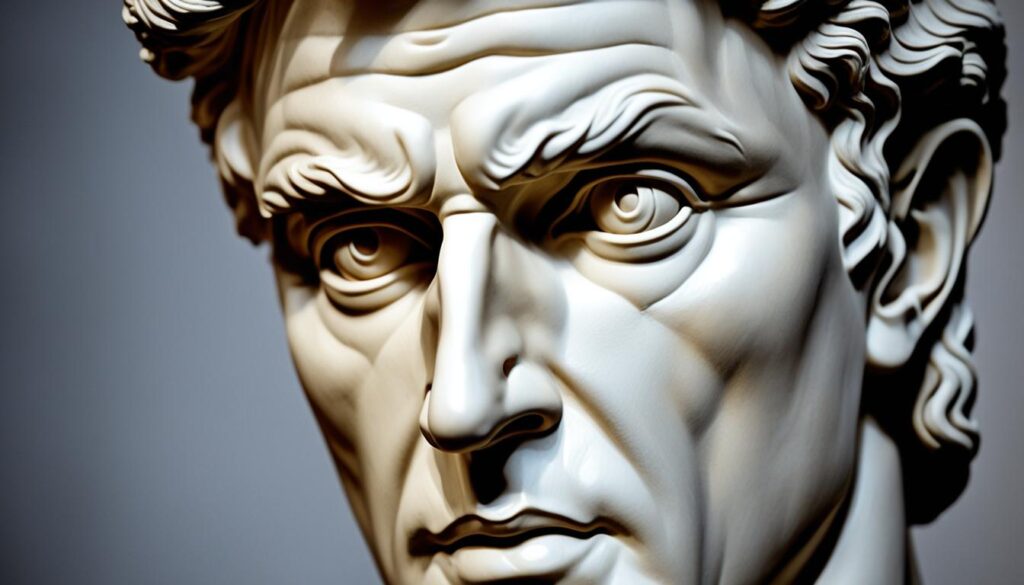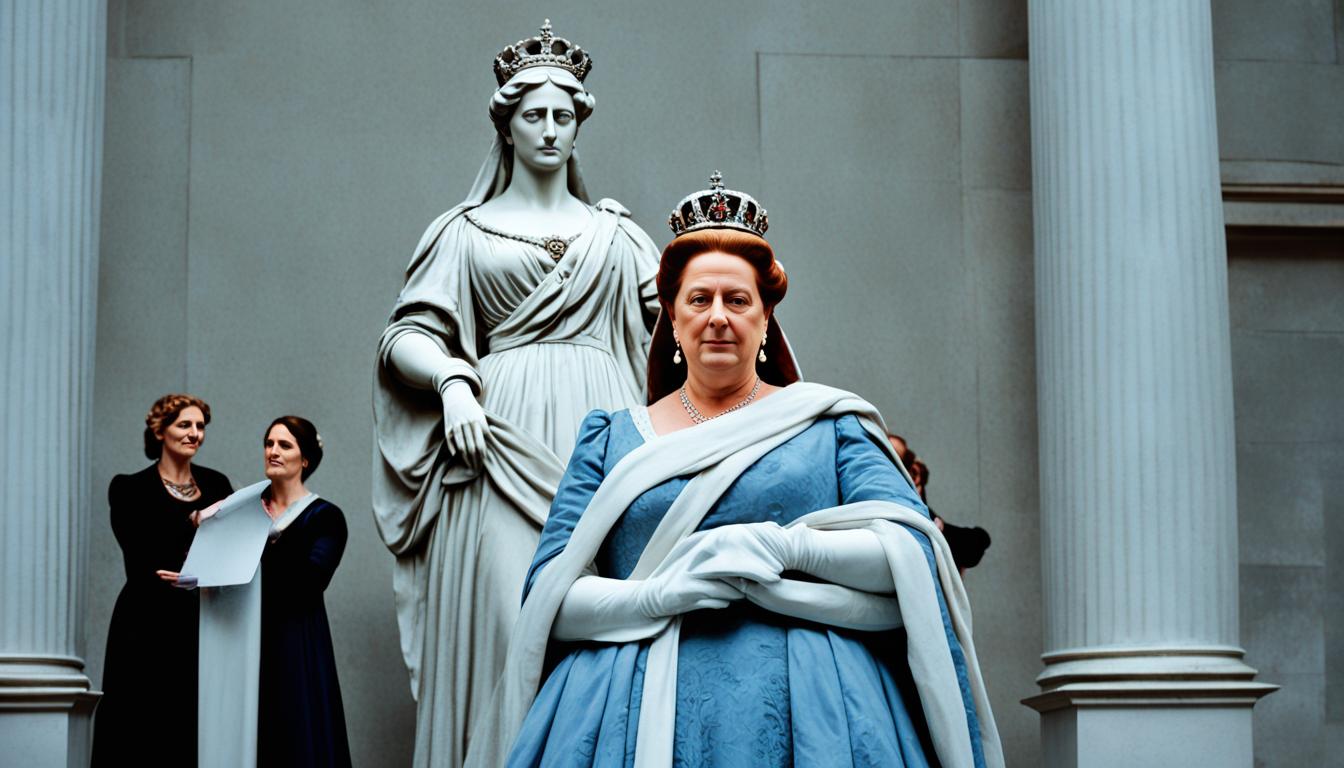In 1857, Queen Victoria gave a replica of Michelangelo’s David to the South Kensington Museum. This act of kindness started a unique story of censorship in Renaissance art. It shows how 19th-century society viewed public nudity.
The replica was made by the talented artist Clemente Papi in Florence. When it arrived in England, it was celebrated. But Queen Victoria was surprised by the statue’s full nudity. Her reaction led to a historic decision that changed how people talked about art and modesty.
Key Takeaways
- Queen Victoria donated a David replica to the South Kensington Museum in 1857
- The statue was created by Clemente Papi in Florence
- Victoria was shocked by the statue’s nudity
- A fig leaf was commissioned to cover the genitalia during royal visits
- This incident sparked debates about art censorship and public nudity
The Story of Michelangelo’s David and Its Replica

Michelangelo’s David was finished in 1504. It is now a symbol of Florentine liberty. In 1873, it moved to the Accademia di Belle Arti for cultural heritage protection.
In 1857, Clemente Papi made two plaster replicas of David. Queen Victoria got one, which sparked interest in Michelangelo’s work. The Victoria and Albert Museum has had this replica since 1873, showing off 19th-century art.
This replica shows what the original looked like in 1847. It highlights the talent of cast makers back then. Later, debates started about hiding the sculpture, showing how views on art nudity changed. Now, both the original and replicas amaze and inspire people all over the world.
Victoria Covered Michelangelo’s David: The Royal Reaction
Queen Victoria’s reaction to the David replica led to a unique solution. A detachable fig leaf was created to cover the statue’s private parts. This leaf was kept ready for royal visits, hung on two hooks. It highlights the tension between artistic freedom and societal norms of the time.
In the 19th century, many nude statues were censored. This reflected the era’s prudish views on nudity in art. The V&A’s David was not the only one to receive such treatment. Many classical sculptures were covered up to meet the social standards of the day.
The original fig leaf for the V&A’s David is gone, but a 1857 version remains in the museum. It was last used during Queen Mary’s reign, which ended in 1953. It shows how societal fears can influence cultural practices, similar to the vampire panics in 19th century New England.
Looking back, we find these practices both amusing and thought-provoking. They give us a peek into the intricate relationship between art, society, and royal tastes in Victorian England.

Leave a Reply